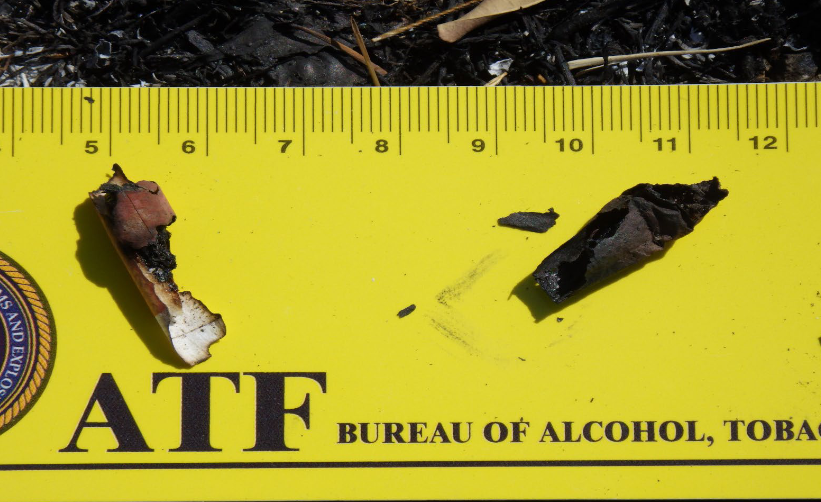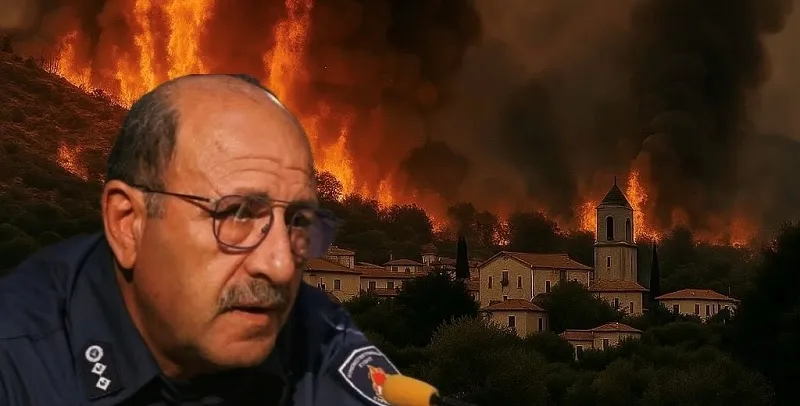The long-awaited ATF report into the July 2025 fire in the Limassol mountains has concluded that the disaster was caused by discarded cigarette butts. The findings, released by the government, have reignited debate about the true cause of the blaze, the reliability of forensic evidence, and whether the fire was the result of negligence or deliberate arson.
ATF findings
The official ATF report identifies careless disposal of smoking material as the cause of the fire, which became the deadliest blaze in Cyprus since the 1974 invasion.
According to the American experts, the investigation shows “with absolute clarity” that the fire was triggered by cigarette butts that came into contact with dry vegetation under extreme weather conditions.
Two cigarette butts were collected at the ignition point, one fully burnt and the other partially burnt, and handed over to the Cypriot authorities as evidence. While many other butts were found in the area, most were not heat-damaged and were considered unrelated to the fire.


The report described how the fire spread with exceptional speed. At 13:26 on 23 July, the flame front was just one metre wide. Seventeen minutes later it had already consumed 1.5 hectares; by 13:55, less than half an hour later, it had spread across two hectares and entered the village of Mallia.
Topography, drought, strong winds reaching 9 Beaufort, high temperatures of 39°C and humidity of just 19% created what the ATF called “exceptionally favourable” conditions for ignition from a cigarette.
The 46-page report also rules out other potential causes, including lightning, fireworks, explosives, machinery, or deliberate accelerants. Based on fieldwork, witness testimony, video evidence and satellite imagery, the ATF categorised the Limassol fire as an accident caused by discarded cigarettes.
The consequences were devastating: more than 10,000 hectares burned, two people killed, four injured, 224 homes destroyed, hundreds of vehicles damaged, and entire communities displaced.
Cigarette butts as forensic evidence
The ATF report has also drawn attention to the role of cigarette butts in forensic investigations, raising questions about whether DNA evidence can be extracted to identify those responsible.
Cigarette filters can contain saliva cells from the smoker, making them a valuable source of DNA. However, their usefulness depends heavily on how much of the butt survives and whether the DNA has degraded due to fire, humidity, sunlight or microbial activity.
When intact, DNA from cigarette butts can be as reliable as any other biological evidence, but partial or mixed profiles are less conclusive. Contamination is also a risk, especially if a cigarette has been shared by more than one person.
Modern methods such as PCR and STR analysis, however, allow scientists to detect even minimal traces of DNA. This has led to cigarette butts solving cold cases abroad. In Glasgow, the 1984 murder of Mary McLaughlin was solved 30 years later thanks to DNA on a cigarette. In Vermont, USA, the 1971 killing of Rita Curran was solved through genetic genealogy in 2019 after a cigarette butt found near her body was tested and linked to relatives of the suspect.
In Cyprus, it remains unclear whether the cigarette butts collected in Mallia will undergo DNA analysis. If viable profiles are found, they could provide further evidence about who discarded them — and whether the act was careless or deliberate.
Tragolas raises doubts
Despite the ATF report’s conclusions, some experts and former officials are unconvinced.
Former fire service chief Marios Tragolas has openly challenged the careless-cigarette theory. Speaking after reviewing the ATF findings, he said:
“I studied the report carefully. Without denying that a fire could start from a cigarette under 39°C and 19% humidity, I remain sceptical. Just days earlier, very close to the ignition site, another fire broke out at 9pm and was extinguished by the fire service. This is even mentioned in the report itself.”
Tragolas highlighted inconsistencies: two butts were recorded (one burnt, one half-burnt), while other cigarette butts were found nearby in vegetation that had not burned. “How is that possible?” he asked. “Was this a dumping site for ashtrays? Did someone empty an ashtray with a lit cigarette inside, by negligence or intent? Was this deliberate arson disguised as carelessness?”
He also pointed to the history of arson in the Troodos foothills. “Why did we suddenly stop seeing fires in the area after this catastrophic blaze?” he asked.
For Tragolas, the July fire was likely the result of intentional arson, possibly using cigarettes as the ignition source but not through simple carelessness. He insists the fire should be treated as a criminal act, not an accident.

Discussions and debates
The release of the ATF findings has closed one chapter of the investigation but opened another. With forensic possibilities still under discussion and doubts raised about intent, the debate over the true cause of the Limassol fire is set to continue in parliament and in the public sphere.
Also read: Cigarette blamed for deadly July wildfire in Limassol
For more videos and updates, check out our YouTube channel.


